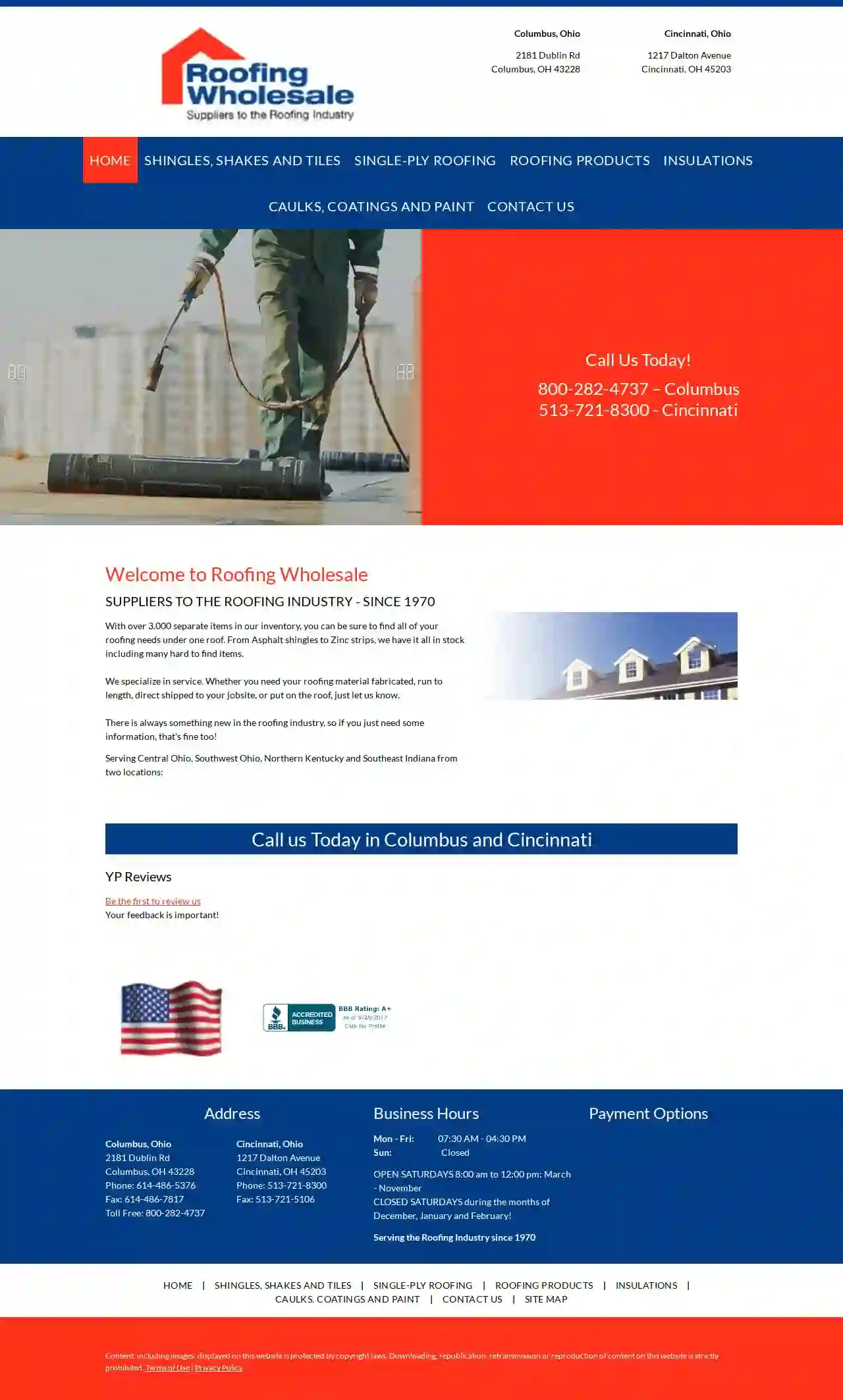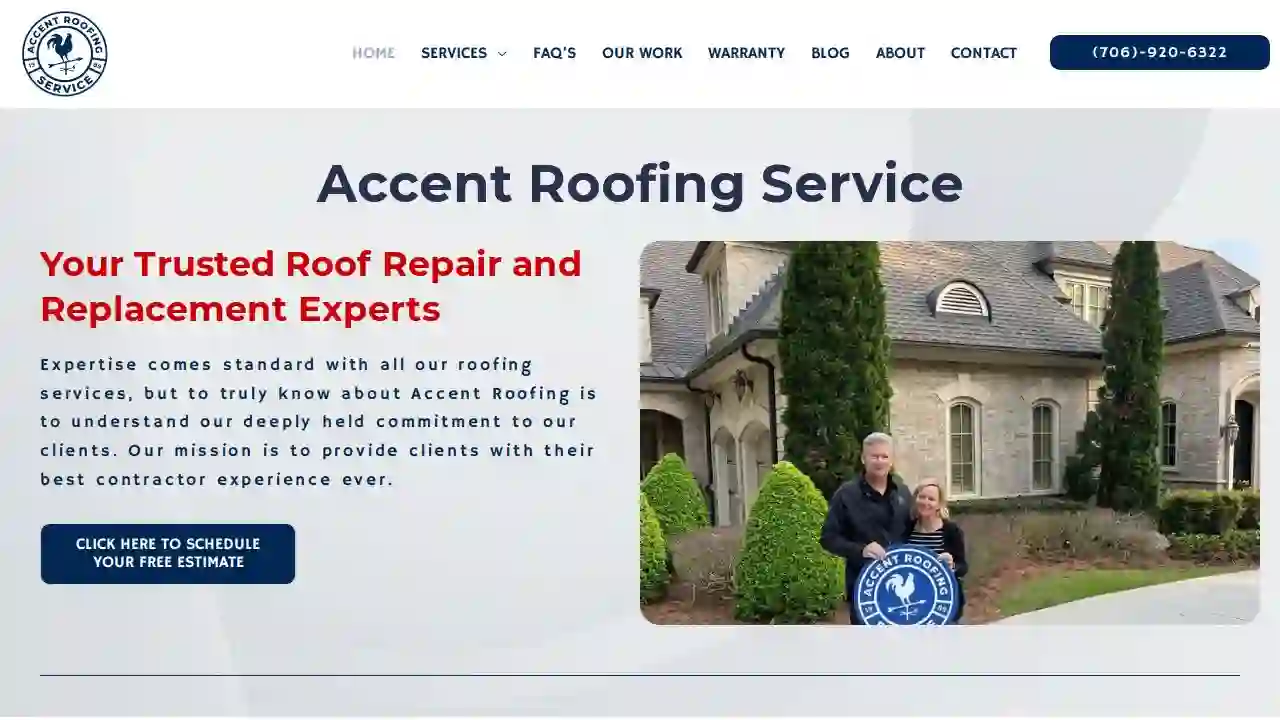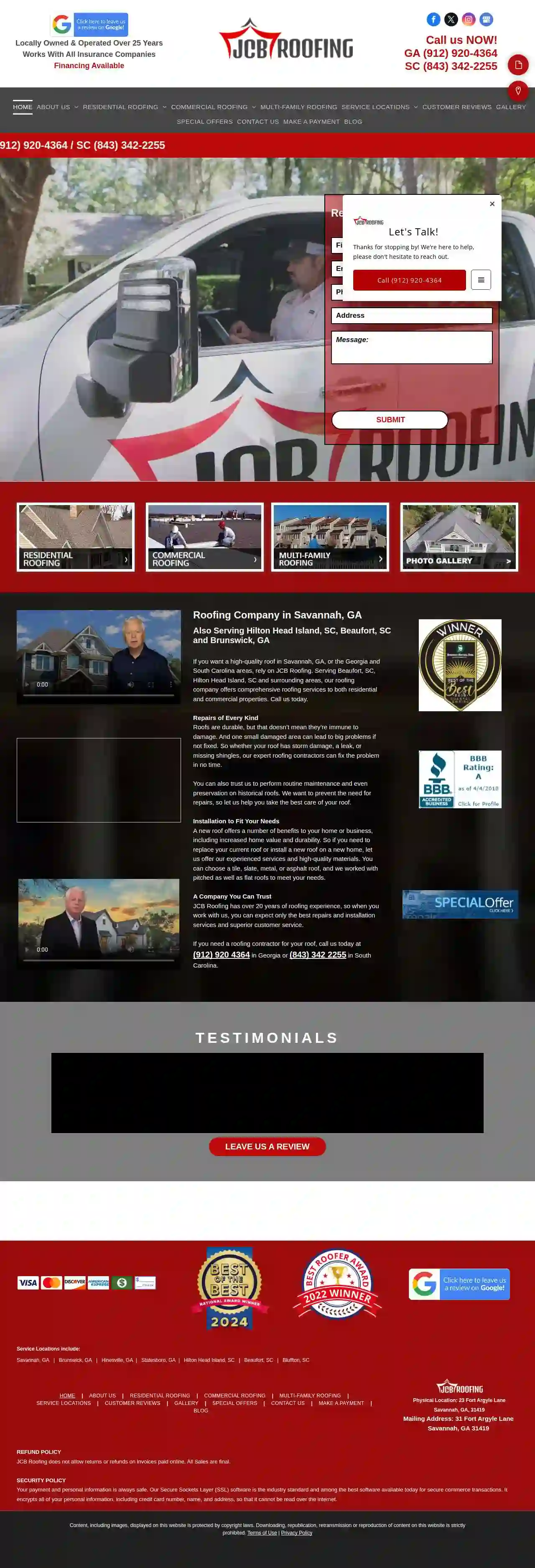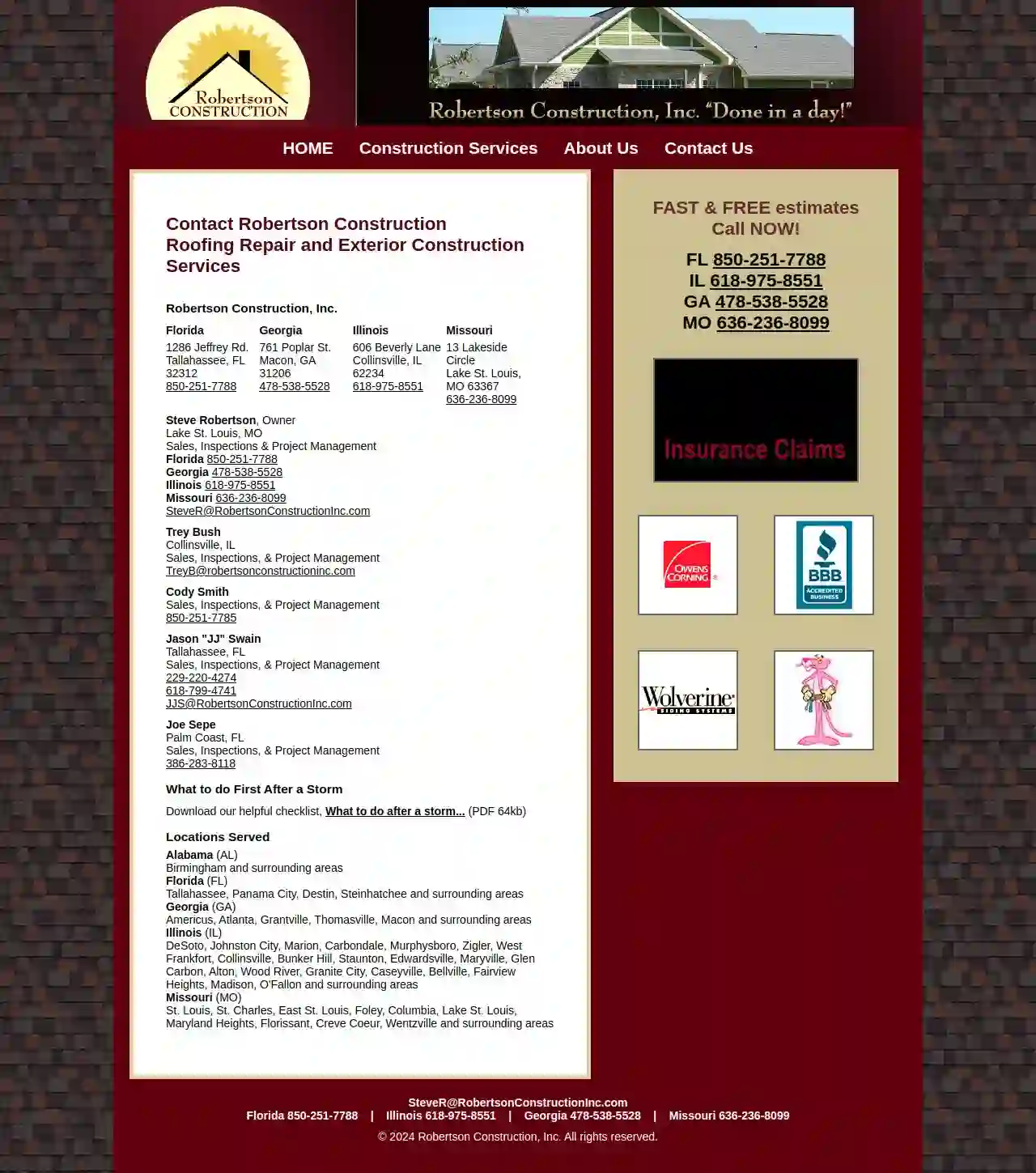Roofing Companies Austell
Find Roofing Contractor in Austell
Receive 3 FREE Roofing Services quotes for your project today! Compare profiles, reviews, accreditations, portfolio, etc... and choose the best deal.

GCC Roofing LLC
53 reviewsRincon, GA, 31329, USEnhance the beauty and protection of your building with GCC Roofing LLC. With over 13 years of industry experience, we provide unbeatable roofing solutions customized to your requirements. Our top-notch services offer long-term security and tranquility for residential and commercial spaces. Start your roofing project with us today and witness the difference. GCC Roofing LLC provides a broad spectrum of residential and commercial roofing services, from professional installations to meticulous maintenance. Our skilled team has expertise in various areas, including siding installations, flat roofing repairs, and more. With us, you can rest easy knowing that your roof is in the hands of industry experts. Our commitment to quality is unwavering. At GCC Roofing LLC, our business is built on the core principles of responsibility and trust. Each project is undertaken with great diligence, ensuring quality and customer satisfaction. Our clients deserve the best, and we work tirelessly to deliver on this promise. We’re not just providing a service but building trust one roof at a time. We take pride in our expertise in metal roofing installations and repairs. Metal roofing, known for its resilience and eco-friendliness, is an excellent choice for residential and commercial properties. It is an investment in long-term safety and environmental responsibility. We at GCC Roofing LLC can help you make this valuable investment for your property. Our mission is to provide premium and reliable roofing solutions. We're dedicated to total customer satisfaction, building trust through our commitment to quality.
- Services
- Why Us?
- Gallery
Get Quote
Roofing Wholesale
4.571 reviews2181 Dublin Rd, Columbus, 43228, USWelcome to Roofing Wholesale SUPPLIERS TO THE ROOFING INDUSTRY - SINCE 1970 With over 3,000 separate items in our inventory, you can be sure to find all of your roofing needs under one roof. From Asphalt shingles to Zinc strips, we have it all in stock including many hard to find items.We specialize in service. Whether you need your roofing material fabricated, run to length, direct shipped to your jobsite, or put on the roof, just let us know.There is always something new in the roofing industry, so if you just need some information, that's fine too! Serving Central Ohio, Southwest Ohio, Northern Kentucky and Southeast Indiana from two locations: Call us Today in Columbus and Cincinnati
- Services
- Why Us?
- Gallery
Get Quote
Accent Roofing Service
5Atlanta, USAccent Roofing Service is your trusted roof repair and replacement experts. With expertise comes standard with all our roofing services, but to truly know about Accent Roofing is to understand our deeply held commitment to our clients. Our mission is to provide clients with their best contractor experience ever. We thrive on making Accent Roofing Service the most complete and trusted roofing company in Georgia. We come highly recommended by insurance agencies, consumer agencies, and many satisfied clients who consider us to be the best, most reliable and most competitive roofing contractor in Georgia.
- Services
- Why Us?
- Gallery
Get Quote
Columbus Roofing Company
4.795 reviews5131 Post Road #355, Dublin, 43017, USExperience the Columbus Roofing Difference. We are a fully accredited and insured roofing company serving the Columbus, Ohio area. Our team of experts has over 15 years of experience in providing top-notch roofing services, including roof repair, replacement, and installation. We also offer gutter and siding services, as well as emergency services. Our goal is to provide exceptional customer service and ensure that our customers are completely satisfied with our work. Contact us today to schedule a free inspection and get a quote for your roofing needs.
- Services
- Why Us?
- Accreditations
- Gallery
Get Quote
Nationwide Roofing & Home Improvement
4.836 reviews4200 Regent Street, Columbus, 43219, USNationwide Roofing and Home Improvement is a trusted partner in roofing and home improvement services across Columbus and the surrounding areas. With a blend of international experience and deep local commitment, we lead our team to deliver unparalleled quality and craftsmanship in every project. Our focus is on understanding your needs, ensuring satisfaction, and making every interaction with us seamless and stress-free. From managing inquiries to overseeing logistics, we're here to ensure your roofing requirements meet the highest service standards. Our dedication extends beyond roofing to embody a culture of professionalism, integrity, and community engagement. As we serve you, our valued customers, we're excited to contribute to our vibrant Columbus community, offering solutions that meet and exceed your expectations.
- Services
- Why Us?
- Our Team
- Gallery
Get Quote
JCB Roofing / HHI, SC
4.737 reviews23 Fort Argyle Lane, Savannah, 31419, USLocally Owned & Operated Over 25 YearsWorks With All Insurance CompaniesFinancing Available Call us NOW!GA (912) 920-4364SC (843) 342-2255 Thank you for visiting our website and considering JCB Roofing for your residential or commercial roofing project. Get the excellent service and superior craftsmanship you deserve. Contact us today to request a free estimate or to ask us any questions you may have. Service Hours:Monday-Friday, 8 a.m. – 5 p.m.Office Hours: Monday-Friday, 8 a.m. – 5 p.m. Scheduling & Repair: [email protected]: [email protected] Fort Argyle Lane Savannah, Georgia 31419Phone: (912) 920-4364 127 Jonesville Rd, Hilton Head Island, SC 29926 Phone: (843) 342-2255 139 Altama Connector, Brunswick, GA 31525 Phone: (912) 920-4364 Office Hours: Monday-Thursday, 8 a.m – 5 p.m.Friday, 8 a.m - 5:30 p.m. Request a FREE Estimate Name Email Contact Number Address Message: Thank you for contacting us.We will get back to you as soon as possible Oops, there was an error sending your message.Please try again later
- Services
- Why Us?
- Gallery
Get Quote
Landmark Roofing & Renovations LLC.
541 reviews340 Eisenhower Drive, Building 500, Suite 520, Savannah, 31406, USLandmark Roofing LLC is a 5-star rated company dedicated to providing top-notch roofing services to all its customers. We pride ourselves on being a reliable and trusted partner for all your roofing needs, whether it's a full roof replacement, repair services, or even just a free inspection. Our team of experts uses high-quality materials and the latest techniques to ensure that your roof is durable, reliable, and looks great.
- Services
- Why Us?
- Accreditations
- Gallery
Get Quote
Roofmeister
526 reviews126 Savannah Round, Summerville, 29485, USLooking For A Hero To Save Your Roof? Look No Further! Our Roofing Services Have Your Covered! Servicing Families in the Lowcountry Since 1993. We have serviced hundreds homes in the last 30 years. We hold ourselves accountable for each job we do, and we promise to treat your home as our own. Residential Roofing Services in Charleston, SC Residential Roofing Repair in Charleston, SC Leaks, holes, whatever it may be, we pride ourselves in being one of the best companies to service your home with roofing repair. Residential Roofing Maintenance in Charleston, SC Sometimes homes just need to be inspected. We do that and much more. We service roofing maintenance on a variety of roofs. Why Us Work With Us? We have been serving the community of Charleston, SC for all over 30 years. Our reputation and positive reviews speak for themselves! We have a proven track record of success in the roofing industry. At RoofMeister, we are better equipped to handle a wide range of roofing projects and will have the knowledge and expertise to provide high-quality workmanship. We are properly licensed and insured at RoofMeisters. Although rare and uncommon, this will protect you in the event of any accidents or damage that may occur during the roofing project. We communicate clearly and regularly throughout the roofing project. Our team at RoofMeister is responsive to your questions and concerns and provides regular updates on the progress of the project. At RoofMeister Home Defenders, we provide expert roofing services focused on quality, communication, and customer satisfaction. Our services include repair, replacement, inspection, and maintenance using top-quality materials. Let us protect your home with a new roof. Visit our services section to learn more and schedule a consultation with our experienced team of professionals today.
- Services
- Why Us?
- Our Team
- Testimonials
- Gallery
Get Quote
Robertson Construction
1286 Jeffrey Rd., Tallahassee, 32312, USRobertson Construction Inc (RCI) specializes in fast and reliable hurricane, hail and tornado storm damage repair. We get your job done in a day, and we’ll work with your insurance company to get your new roof free! Why Robertson Construction? Extensive storm repair experience – from hurricane, tornado or hail. 79 roofers mean every job is "done in a day". 13 dump trucks mean NO dumpsters in your drive OR yard. We understand how to work with your insurance company so your property value is restored quickly and often at no cost to you. We travel with the weather, but we’re there when you need us. Our experience, resources and insurance knowledge give you peace of mind that your property will be repaired quickly at minimal cost to you.
- Services
- Why Us?
- Our Team
- Gallery
Get Quote
Skyfall Roofing + Restoration
59 reviews1089 REGAL HILLS LN, MABLETON, 30126, USTHE SKYFALL GROUP provides exterior repair and storm restoration with two main areas of focus for residential and commercial needs throughout Georgia and Tennessee - roof repair and roof replacement. We started this business to bring quality, trust, and integrity to an industry where it can be hard to know which service provider you should feel confident to repair your home or business. Schedule an appointment with one of our professional representatives so you can experience the difference we are talking about. Our evaluations are free of charge, so let the sky fall! We have got you covered. We are a family owned and run company focused on the Southeast with offices in Atlanta and Nashville. We specialize in residential and commercial insurance restoration. Services we offer are Roofing, Gutters, Siding, and Painting. We aren’t the biggest and we don’t want to be, as it’s easy to get lost as just another customer number in a large company. We’ve found the perfect balance as a family owned company with enough scale and the right relationships to be competitive. From the products we have selected to represent to the kind of care and service we provide, every step of the way, you will feel educated, informed, and cared for like you were part of our own family. We start with a FREE INSPECTION and evaluation of your home or business. When dealing with insurance, we look at it just like your carrier would and help you understand how an adjuster might view your particular situation. We want you to understand what is happening or what has happened to your home or business as well as every aspect of any project we propose, so we take the time to answer any questions, we provide photos, documentation, and videos—we want you to feel good about the work being done on your home or business, and in the case of insurance restoration, feel confident in the process and how we help handle your interests with your carrier. Our business is only as good as the quality of referrals we receive from satisfied customers, so we only consider a project completed when you give us the thumbs-up. THE SKYFALL GROUP offers a 5 year labor warranty on roof replacement. The shingle manufacturers we represent offer their own warranties on the products themselves, typically lifetime.
- Services
- Why Us?
- Gallery
Get Quote
Over 17,196+ Roofing Companies on our directory
Our roofing experts operate in Austell and surroundings!
Roofyng.com has curated and vetted Top Roofing Companies in and around Austell. Find a top & trustworthy business today.
Frequently Asked Questions About Roofing Companies
- Safety First: Avoid going onto the roof during a storm, as it's dangerous.
- Document the Damage: Take photos and videos of the damage for insurance purposes.
- Contact Your Insurance Company: Report the damage to your insurance company as soon as possible to initiate a claim.
- Temporary Repairs: If safe, address any immediate leaks using buckets or tarps to minimize further damage.
- Contact a Roofing Contractor: After the storm, have a qualified roofing contractor inspect the roof and provide a repair estimate.
- Experience: 'How long have you been in business, and what experience do you have with my type of roof?'
- Licensing and insurance: 'Are you licensed and insured, and can I see proof of coverage?'
- Warranties: 'What warranties do you offer on your work and the materials used?'
- References: 'Can you provide references from past clients?'
- Project Timeline: 'What is the estimated timeline for completing the project?'
- Payment Terms: 'What are your payment terms, and do you require a deposit?'
- Communication: 'How will you keep me updated on the project's progress?'
- Cleanup: 'What steps will you take to protect my property during the project and ensure proper cleanup afterward?'
- Metal roofs: Reflect sunlight, reducing cooling costs.
- Tile roofs: Offer thermal mass, regulating temperature.
- Cool roofs: White or light-colored roofs with high solar reflectance.
- Green roofs: Vegetated roofs providing insulation and reducing heat absorption.
- Home Improvement Loans: Offered by banks or credit unions.
- Home Equity Loans or Lines of Credit: Use your home's equity as collateral.
- Government Programs: Check for energy efficiency rebates or grants.
- Contractor Financing: Some roofing companies offer financing plans.
What should I do if my roof is damaged in a storm?
What questions should I ask a roofing contractor?
What are some energy-efficient roofing options?
How can I get financing for a new roof?
What should I do if my roof is damaged in a storm?
- Safety First: Avoid going onto the roof during a storm, as it's dangerous.
- Document the Damage: Take photos and videos of the damage for insurance purposes.
- Contact Your Insurance Company: Report the damage to your insurance company as soon as possible to initiate a claim.
- Temporary Repairs: If safe, address any immediate leaks using buckets or tarps to minimize further damage.
- Contact a Roofing Contractor: After the storm, have a qualified roofing contractor inspect the roof and provide a repair estimate.
What questions should I ask a roofing contractor?
- Experience: 'How long have you been in business, and what experience do you have with similar projects?'
- Licensing and insurance: 'Are you licensed and insured, and can I see proof of coverage?'
- Warranties: 'What warranties do you offer on your work and the materials used?'
- References: 'Can you provide references from past clients?'
- Project Timeline: 'What is the estimated timeline for completing the project?'
- Payment Terms: 'What are your payment terms, and do you require a deposit?'
- Communication: 'How will you keep me updated on the project's progress?'
- Cleanup: 'What steps will you take to protect my property during the project and ensure proper cleanup afterward?'
What are some energy-efficient roofing options?
- Metal roofs: Reflect sunlight, reducing cooling costs.
- Tile roofs: Offer thermal mass, regulating temperature.
- Cool roofs: White or light-colored roofs with high solar reflectance.
- Green roofs: Vegetated roofs providing insulation and reducing heat absorption.
How can I get financing for a new roof?
- Home Improvement Loans: Offered by banks or credit unions.
- Home Equity Loans or Lines of Credit: Use your home's equity as collateral.
- Government Programs: Check for energy efficiency rebates or grants.
- Contractor Financing: Some roofing companies offer financing plans.